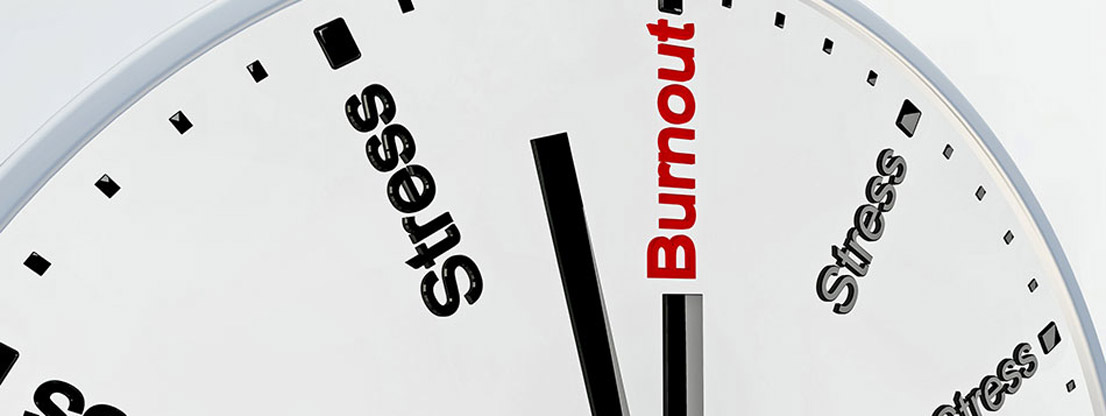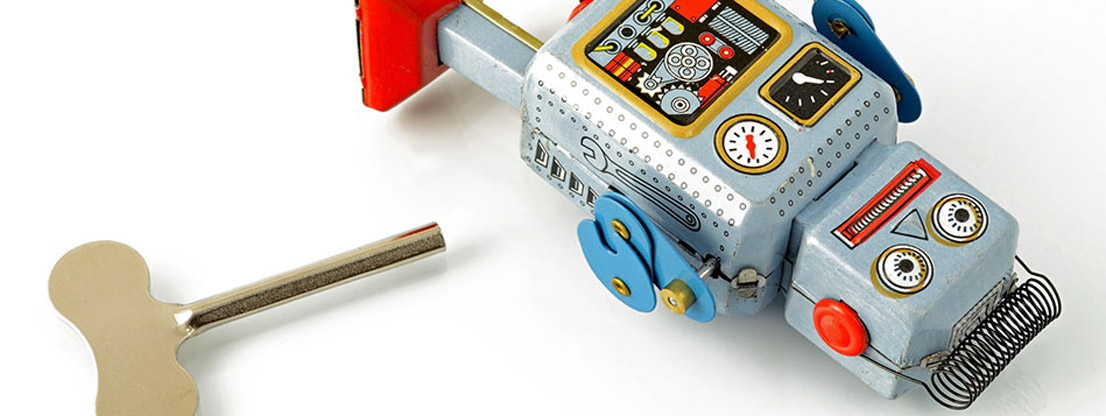Severe – every second German feels threatened by burnout. Are you one of them? Before we tell you tips and tricks on how to integrate effective burnout prevention into your life, let’s first mark out the field: What exactly does the term actually mean? It was first used in 1974 by the American psychologist Herbert Freudenberger – and was initially intended to describe a typical problem faced by employees of voluntary aid organisations. [1]
Burnout is not an independent medical diagnosis
One thing is certain: The concept of burnout has changed again and again since the 1970s, went from being a problem for volunteers to a classic nurse’s disease, was later considered an occupational risk for top managers, a fashion diagnosis or “male depression”. To this day there is no binding definition of burnout – and no independent medical diagnosis. Older characterisations of the syndrome consider emotional exhaustion, limited performance and a distanced, cynical attitude at work to be the leading symptoms. [2]
More recent approaches are usually more open and general: the great dictionary of psychology, for example, speaks of an “emotional, mental and physical state of exhaustion after a previous process of high workload, stress and/or excessive demands on the self”. For most people, burnout is commonly associated with professional overwork. [3]

Being burnt out – a strong image
So although there is no uniform, binding definition, the concept of burnout has long been firmly anchored in our everyday language. “Have you heard? XY has a burnout!” – Somehow everyone has heard sentences like this before. But why is this so? Probably because of the strong, vivid image of “being burnt out”: In our fast time we can all imagine something under it, when after the big fire of uninterrupted top performance nothing works anymore and the tank is completely empty. Today, by the way, we no longer feel that the syndrome is restricted to certain risk groups such as nurses or workaholics. Burnout, we now have the feeling, can affect anyone.
1. Identify burnout symptoms early on
The fact that there is no clear definition of the burnout syndrome makes it difficult to classify symptoms, of course. In fact, there is no clear list of symptoms that could indicate the presence of burnout. However, the Dresden Burnout Study – one of the most recent research papers on the topic – talks about three groups of symptoms according to Shirom:
Physical fatigue
You feel weak for a long period of time, you are chronically tired and you have the feeling that you simply cannot summon up any energy.
Emotional exhaustion
Your emotional resources are used up. You find it difficult to be empathetic towards others.
Cognitive exhaustion
You find it hard to concentrate and you feel that you are cognitively not fit. It takes you longer than usual to do your work – and you are less successful than usual. [4]

Differentiation Burnout / Depression
Even though burnout and depression are similar in their symptoms and a severe burnout can also lead to depression, the two conditions should be clearly distinguished from each other. If in doubt, this distinction should always be made by your doctor! These two points can provide important information:
- The causes of burnout syndrome lie in the work context. This does not always have to be the classic gainful employment, but can also be the care of relatives or voluntary work.
- People who suffer from burnout tend to be angry and anxious. For people with depression, on the other hand, grief and melancholy are at the centre of the emotional experience. [5]
2. Reduce the causes of burnout
The conditions under which burnout occurs have not yet been very well researched. What is certain, however, is that both your personal attributes and the characteristics of your environment are involved in the development of the syndrome and interact with each other. [6]

We and our environment are in interaction with each other
But how can this look concretely if personality traits and job situation react with each other in such a way that a burnout episode is favoured? For example like this:
Mr. Müller, who is rather perfectionistically inclined, always had a relatively large amount of time at his previous workplace to complete his tasks, felt comfortable and received a lot of recognition from his boss. After changing his job to a busier – i.e. more stressful – department, he developed sleep disorders. He stays in the office longer and longer; he hasn’t gone running for a long time now because he regularly loses time on the couch in the evening. He feels rage and desperation inside him, the situation scares him.
Mrs Schmidt is a teacher and does a great job in the eyes of her colleagues. Subjectively, however, she always fails to live up to her expectations: She plans elaborate excursions with her classes, gives extra tuition to weak pupils during the big break and yet feels that she is not doing enough. Inwardly, she has felt completely burnt out for months.
Mr. Schulze actually has a very low workload – after a psychosomatic cure for an anxiety disorder, he is supposed to find his way back to his job bit by bit through a reintegration measure. But his stress processing strategies are not sufficient for this, he can hardly master even small professional tasks. In the evening, he is already dreading getting up the next day, and the thought of his job makes him feel really sick.
A young trainee is covered in extra work by his older colleagues on the construction site and sees no way out of the situation. It is difficult for him to say “no” because he fears that he will offend others and look like a whiner in front of the other apprentices. His girlfriend broke up with him because he doesn’t feel like doing anything any more and is constantly going off the rails at home because of trivialities.
A nurse finds her work on a crowded ward increasingly pointless. She hardly has time to exchange a few words with her patients. More and more often she finds herself making cynical jokes with her colleagues about the patients on the ward during the short breaks. Increasingly, she can no longer stand herself, but doesn’t dare to seek help from outside. Her back pain is getting worse and worse and she hasn’t been able to concentrate properly for a long time.
3. Analyse and approach your personal level
Even though there is no such thing as a “burnout personality”, people who have good stress management strategies are less at risk of burnout. In contrast, the classic “helper syndrome” is considered a risk factor – teachers, police officers or doctors who are strongly committed to one thing are more often affected than others. High demands on yourself can also make you susceptible to the syndrome. In addition, low self-esteem and the inability to set personal limits are considered to be burnout-promoting. And: Those who are not good at dealing with frustration and hurt can also more easily get caught in the downward spiral of exhaustion and cynicism.

Social dimension
However, there are also developments at the societal level that favour burnout diseases in the population. Experts speak, for example, of the increasing pressure on individuals in a meritocracy that wants to become more and more efficient – according to the motto: “The Sky is the Limit! Even if unforeseeable developments in one’s own work situation with frequent job changes are topical for many people, burnout can occur more frequently than in communities that provide their members with more continuity and security. [6]
Conditions at the workplace
There are three main factors in the workplace which – in interaction with personal and social conditions – can lead to burnout:
- A high workload
- Too little individual choice and recognition
- Not enough respect and support from colleagues [7]
4. Burnout prevention: 7 tips that help against “burnout
How does burnout prevention work? On the one hand, it is a task for society as a whole: How is occupational health and safety organised in our country? What are our values? Do we pay attention to each other – or do we burn ourselves out in competition? Of course, it is difficult for individuals to influence these larger dimensions – and yet everyone should use their power: An entrepreneur can stand up for a corporate culture that prevents burnout. An MEP can ensure that burnout prevention remains in the political spotlight. A teacher can talk to his students about stress management and take out unnecessary pressure in the examination phase. In this respect, we are all called upon to be more mindful in our living together to protect each other from stress disorders such as burnout syndrome.

What can I do by myself?
In order to effectively fight burnout yourself, you should first of all find out what you need to feel good. These five steps can provide you with good starting points:
1. Check your own demands
Are you more of an “overperformer”? Great if you have the ambition to do your job well! But just as a precaution, check your motives: Is your discipline due to the exciting challenge of your work – or do you always have to give your best at all times, whatever the cost? If you feel overwhelmed by your own demands, then it’s certainly time to shift down a gear. Your self-esteem should not depend solely on external recognition of your performance.
2. Take care of yourself
Cancel the Pilates course because of the upcoming deadline? But would you rather bang your pizza into the oven so that you can work off the unfinished emails in the evening instead of cooking freshly and going dancing with your girlfriend afterwards? What happens to everyone from time to time should not become a permanent fixture. Please take care of yourself – in every respect. Be loving and caring with yourself and don’t define yourself solely by your achievements and professional successes.
3. Rely on anti-burnout nutrition
Fresh, high-quality food is a real burnout killer! Good food not only makes you more efficient, but also nourishes your soul – sit down and try to enjoy your meal with care. An additional plus of a conscious eating culture: colds and co. have a much lower chance of weakening you in stressful professional situations. Take your time to eat and chew your food long enough. This way you can avoid heartburn, stomach ache and other stress symptoms right from the start!
4. Your body needs exercise!
Although we have all known for a long time that sport prevents stress-related illnesses, we take far too little heed of this knowledge, especially in hectic phases of life. Here it may be good to make it clear to you that exercise is not a luxury or a wellness treatment – you may take the time to take care of your body! Maybe you should try entering sport as a fixed date in your calendar – even if you just want to go jogging for yourself or have planned yoga on your living room carpet.
5. Learn to draw boundaries for others
Are you always the one everyone in the family asks when the computer is bugging around? Or always the one who is expected to coordinate the buffet for the next family celebration, prepare the gift voucher for Uncle Gerhardt and organise the muffins for the executive secretary’s stand-out? People who have not learned to say “no” are more at risk of falling into the burnout trap in the course of their lives. But of course: It is not easy to overcome learned behaviour and the fear of offending others! Tip: Start small at first – and don’t get pretzels for everyone during the next lunch break, for example. Stay friendly, but firm. If you notice that you don’t want to be able to say no, consider whether you can plan coaching – or other help – for the long term.
6. Relax
One proven means of coping with stress is through relaxation techniques, which can also be a great help in eliminating burnout tendencies in your life. In addition to more classical techniques such as autogenic training, meditation or muscle relaxation according to Jacobson, there are also more and more apps that allow you to easily integrate conscious relaxation breaks into your everyday life. According to a study by the University of Kassel, such web-based training can be surprisingly successful: After only two weeks, the users of an app-based mindfulness programme showed higher values – among other things in terms of work commitment, job satisfaction and self-efficacy. [8]
7. Meditation with sonamedic frequency therapy
The sonamedic frequency therapy is also an app-based tool that can help you to prevent burnout symptoms and to better process stress. Binaural beats are used, for example, to let you slide easily into deep relaxation. You can find out exactly how this works here.
Scientific sources:
(1) Studie der PronovaBKK: „Betriebliches Gesundheitsmanagement 2018“. Online (Zugriff 30. Juni 2019)
(2) Maslach (1982): Burnout: The cost of caring.
(3) Großes Wörterbuch der Psychologie (2007).
(4) Shirom (2003): Job-related burnout: A review. In: J.C. Quick & L. E. Tetrick, Handbook of occupational health psychology, S. 245-265.
(5) Shirom, Ezrachi (2003): On the discriminant validity of burnout, depression and anxiety: A re-examination of the burnout measure. In: Anxiety, Stress & Coping, 16 (1), S. 83-97.
(6) Burnout-Studie der Universität Dresden (2018). Online (Zugriff 1. Juli 2019)
(7) Rössler, Hengarten, Ajdacic-Gross, Angst (2013): Zusammenhang zwischen Burnout und Persönlichkeit. In: Der Nervenarzt, 84 (7), S. 799-805.
(8) Möltner, Leve, Esch (2018): Burnout Prevention and Mobile Mindfulness: Evaluation of an App-Based Health Training Program for Employees. Online (Zugriff 06. Juli 2019)




